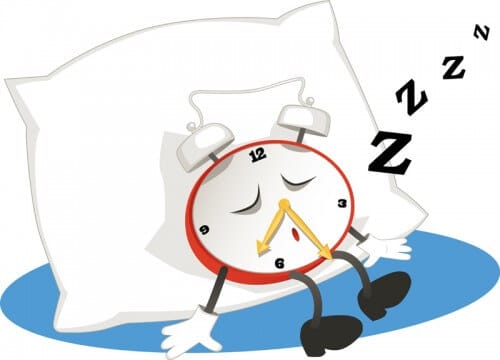It is possible that in the future it will be possible to adjust the biological clocks through nutrition

What is the connection between aging and the slowing down of our biological clocks? And how is this phenomenon related to nutrition? Weizmann Institute of Science scientists recently discovered the answers to these questions. It turns out that a group of substances involved in metabolism (metabolites), which decrease in aging cells, are related to the functioning of the circadian clocks in our bodies (the circadian clocks are mechanisms encoded in the genetic load, and they maintain the cycle times of day and night). The results of the study, which were published in the scientific journal Cell Metabolism, indicate that the metabolic substances examined, which are found in many foods, may help keep the rhythm of our internal clocks.
Dr. Gad Asher and members of his research group, in the Department of Biological Chemistry at the Weizmann Institute of Science, study circadian clocks with the aim of understanding how they help regulate various processes, from nutrition to metabolism, and how they are affected by them. Dr. Asher and research student Ziv Zweihaft followed clues to the existence of a relationship that may exist between certain metabolites, called polyamines, and the functioning of the circadian clocks. "We get polyamines from food, but our cells also produce them," says Zweihaft. It is known that these substances regulate several essential processes in the cell, including growth and reproduction. In addition, it has been discovered that the levels of polyamines in our body cells tend to decrease as we age.
In experiments with mice and cell cultures, the scientists discovered that the enzymes required for the production of polyamines undergo cycles related to both diet and the circadian rhythm of day and night. These oscillations did not exist in mice that had been engineered in such a way that the function of their circadian clock was canceled.
Later, the scientists discovered a kind of cyclical feedback, which means that the circadian clocks that regulate polyamine production are affected by the level of the substance, which causes changes in their operation. In cell cultures, the addition of polyamines more or less caused the circadian rhythm to shut down, while maintaining low levels caused the clock to slow down by about two hours. "The polyamines are actually a built-in part of the mechanism of the circadian clock," says Dr. Asher.
The scientists then asked how this process manifests itself in younger and older mice that have higher or lower natural levels of polyamine. It is known that the circadian clocks of older mice run slower, and that this is accompanied by a decrease in polyamine levels. The scientists discovered that it is possible to slow down the clocks in young mice by giving a drug that prevents the formation of polyamines in the cells. In contrast, adding polyamine to the drinking water of older mice caused their clocks to run faster compared to other mice in their age group, and in fact restored their function in a manner similar to that of young mice.
Dr. Asher and his group members continue to investigate the function of polyamines in circadian systems. "This discovery illustrates the close connection between circadian clocks and metabolism," says Zweihaft. "Our current findings are based on experiments with mice," adds Dr. Asher, "but we believe and hope that they are also true for humans. If it turns out later that this is indeed the case, it will have extensive medical consequences. The ability to fix our biological clock in a simple way, through a nutritional intervention in the form of a polyamine supplement, is fascinating, and obviously has great medical potential."
